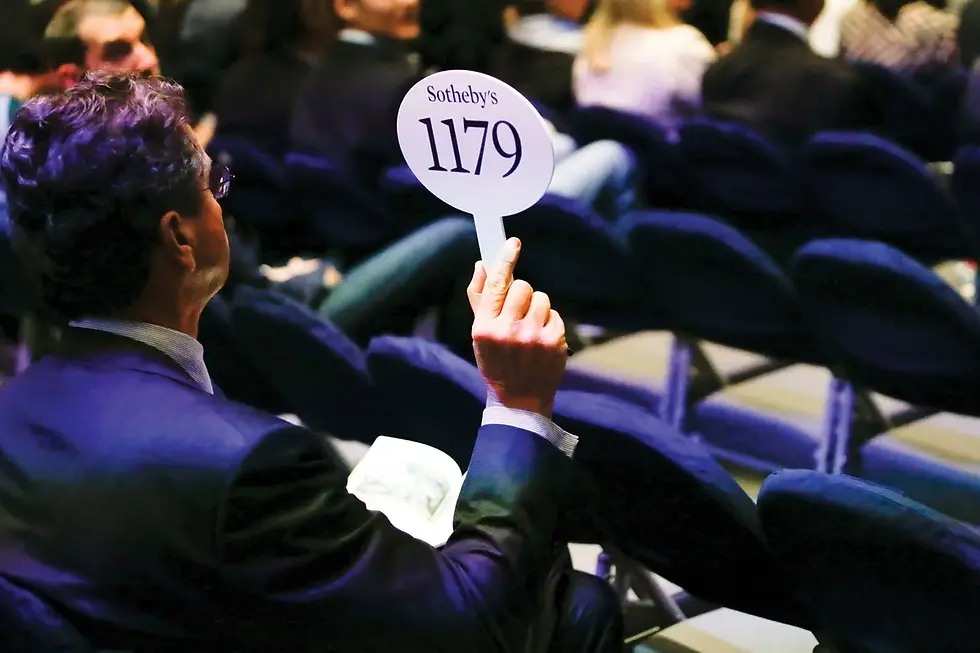The Collection of Robert and Patricia Weis Goes to Auction at Christie’s
- Yoann Guez
- 3 days ago
- 4 min read

Next week, Christie’s New York will present The Collection of Robert F. and Patricia G. Ross Weis, a refined and deeply personal ensemble that traces over seventy years of thoughtful collecting. The evening sale, taking place on 17 November 2025, gathers more than eighty works spanning the great currents of twentieth-century art—from Cubism to Abstract Expressionism—anchored by key paintings by Piet Mondrian, Pablo Picasso, Henri Matisse, Mark Rothko, and Joan Miró. Estimated in excess of USD 180 million, the sale stands among the most significant single-owner auctions of the season.

Robert F. Weis (1928–2015) was the longtime chairman of Weis Markets, Inc., the Pennsylvania-based family company founded by his grandfather in 1912. Aside from his professional life, he cultivated, with his wife Patricia G. Ross Weis (1931–2024), a parallel life devoted to art. Their approach was methodical, driven by close observation and years of study rather than by fashion or a sense of market opportunity. They began collecting in the early 1960s, soon after their marriage, starting modestly with prints and drawings before moving toward modern painting and sculpture as their confidence and means grew.
The Weises split their time between Sunbury, Pennsylvania, where Robert ran the company, and New York City, where they immersed themselves in the post-war art world—frequent visitors to the Museum of Modern Art, galleries, and later, to the auctions that would become their quiet classroom. Patricia, born in New York and trained in art and design, kept detailed notes on every work they considered. As for Robert, he was known to read every catalogue and monograph available before deciding. As he once remarked to a friend, “collecting isn’t buying—it’s learning.” One of their first major acquisitions, Georges Braque’s La Ciotat (1907), set the tone for what would follow: a fascination with the formal breakthroughs of early modernism and the dialogue between European and American abstraction. Over the decades, they built a collection that reads like a concise history of twentieth-century art seen through the eyes of two disciplined viewers.

At the heart of the upcoming Christie’s sale is Piet Mondrian’s Composition with Red and Blue (1939–41), estimated at USD 20–30 million, a late masterwork in which line, color, and structure resolve into a serene equilibrium. From the same period of European modernism comes Henri Matisse’s Figure et bouquet (Tête ocre) (1937), painted in Nice and embodying the luminous balance between figure and pattern that defined the works of that period.

The Weises’ collecting also extended to the great masters of surrealism and abstraction: Joan Miró’s Femme nue (1932), a 1961 edition of Max Ernst’s sculpture Le roi jouant avec la reine (1944), and Arshile Gorky’s exceptional drawing Untitled (1946) reflect their sustained interest in the poetic and psychological currents that bridged Europe and post-war America. The dialogue between those traditions reaches its apex in Mark Rothko’s No. 31 (Yellow Stripe) (1958)—estimated to be worth around USD 50 million by many—a monumental canvas from the artist’s mature period of color field paintings that spent decades on display above the fireplace in their Sunbury home. The work was first handled by Sidney Janis Gallery in New York before passing through notable galeries including Galerie Beyeler in Basel and Pace Wildenstein in New York, from which Robert and Patricia Weis acquired it in 1995. The painting’s exceptional provenance and long residence in the Weis home underscore its place as the collection’s defining statement—a luminous field of red and yellow that distills Rothko’s pursuit of pure emotional presence.

Both the couple’s two main residences—their Sunbury ranch house built in the 1960s and their New York apartment—were conceived as spaces for daily living among art. None of the works were stored away; they were part of the architecture of their lives. From the looks of it, visiting the Weises’ Sunbury house must have been akin to visiting a private museum: paintings by Rothko, Picasso, Matisse, and Miró hung above their furniture, and a focused collection of ceramics by Lucie Rie and Hans Coper complimented the space. A sense of intimacy thus defines the collection’s tone. Unlike the sweeping grandeur of institutional holdings, the Weis ensemble is shaped by proportion and dialogue—each work chosen for how it spoke to the next. Many of these pieces have not been publicly exhibited for decades, and Christie’s presentation will, for the first time, reunite them as they once hung together.

After both of their parent’s passing (Robert passed away in 2015, and Patricia in 2024), their three children—Colleen, Jennifer, and Jonathan Weis—chose to bring the collection to the art market. The Weis collection will form a centrepiece of Christie’s Fall Marquee Week in New York, with the evening auction of 18 masterworks on November 17 and further works from the collection scattered across both the Impressionist & Modern Art Day Sale on November 18 and the Post-War & Contemporary Art Day Sale on November 20.
The house has already fully guaranteed the November 17 evening sale, signalling strong confidence in its resonance with collectors. For Christie’s, this collection follows in the lineage of landmark private sales such as the Paul G. Allen and Emily Fisher Landau collections—moments that define both aesthetic taste and market confidence. In the wake of encouraging results across Europe and renewed buyer engagement in Paris during the latest edition of Art Basel, the Weis collection marks another positive signal for the art market: great consignments are coming back to the upper tier of the art market.




Comments